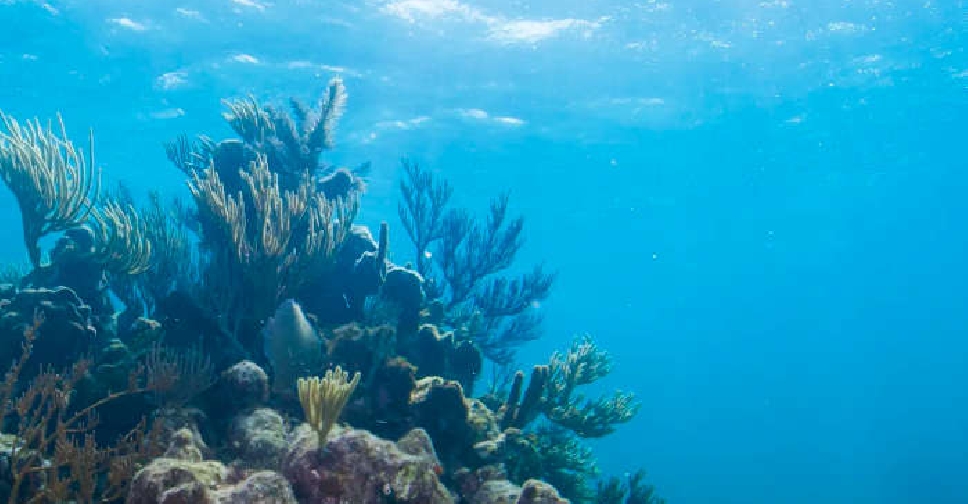Abu Dhabi Embarks on Innovative Coral Restoration Partnership with Archireef
In a significant environmental initiative, Abu Dhabi has formalized a Memorandum of Understanding (MoU) to collaborate with the innovative company Archireef, focusing on the development of artificial coral reefs through advanced 3D-printing technology. This endeavor, announced during the distinguished International Union for the Conservation of Nature (IUCN) World Conservation Congress held in Abu Dhabi, marks a noteworthy advancement in the capital city’s ongoing commitment to marine ecosystem restoration.
The partnership between the Environment Agency – Abu Dhabi (EAD) and Archireef reflects a strategic alignment of expertise geared towards the revitalization of coral reef habitats and the promotion of marine biodiversity. As global marine environments face unprecedented challenges due to climate change, pollution, and habitat destruction, Abu Dhabi’s initiative highlights a proactive approach to combating these threats through innovative technology and eco-engineering.
The Significance of Coral Reef Restoration
Coral reefs are often described as the “rainforests of the sea” due to their vast biodiversity and critical ecological functions. They provide critical habitats for numerous marine species and serve as natural barriers that protect coastlines from erosion. However, alarming data indicates that approximately 50% of the world’s coral reefs have been lost in the last 30 years. The need for restoration is urgent, underscoring the importance of efforts such as this partnership.
Through the MoU, EAD and Archireef will pursue cutting-edge research and development of artificial coral reef structures that are intricately designed using natural elements. These 3D-printed reefs will not only mimic the architectural complexity of natural coral but will also enhance the resilience and sustainability of marine ecosystems in Abu Dhabi’s waters.
Technological Innovation Meets Environmental Stewardship
Dr. Shaikha Salem Al Dhaheri, Secretary General of EAD, emphasized the impactful synergy of combining advanced technology with ecological expertise. “By integrating cutting-edge 3D-printed technology with EAD’s extensive expertise in coral restoration, we are significantly enhancing the resilience and sustainability of our coral habitats,” she stated. This collaboration aims not only to repair damaged ecosystems but also to enhance their ability to adapt to changing environmental conditions.
The use of 3D printing in creating artificial reefs allows for unprecedented customization, enabling researchers and engineers to produce reef structures that optimize marine habitat conditions. Such innovation positions Abu Dhabi at the forefront of marine conservation efforts, matching its ambitions for sustainable development with actionable environmental strategies.
A Broader Commitment to Sustainability
This partnership is part of a larger vision for sustainable development in the Emirate, contributing directly to the United Nations Sustainable Development Goals (SDGs), particularly those focused on life below water. Through various initiatives such as this, Abu Dhabi aims to foster stronger marine ecosystems that can withstand environmental pressures while simultaneously enriching local biodiversity.
The collaboration with Archireef is not merely an isolated project but part of a continuum of efforts aimed at environmental sustainability across the region. Abu Dhabi has gained recognition for its commitment to green initiatives, and the establishment of artificial reefs serves as a testament to the emirate’s proactive approach to environmental stewardship.
Implications for Future Marine Conservation
Looking ahead, the implications of this partnership extend beyond immediate ecological restoration. As marine environments continue to endure the impacts of climate change, the collaboration between EAD and Archireef may serve as a model for other regions facing similar challenges. The integration of technology into conservation strategies is likely to evolve, presenting new opportunities for innovation in marine ecology that could result in more resilient ecosystems across the globe.
While the partnership is still in its early stages, additional collaborations and initiatives will likely emerge as awareness of environmental issues grows, and technologies advance. The commitment to restoring coral reefs demonstrates a holistic approach to environmental challenges—one that encompasses technology, scientific research, and sustainable development.
Conclusion
In sum, the collaboration between Abu Dhabi and Archireef holds promise for the future of marine conservation, showcasing the potential of technology in addressing ecological crises. The commitment to restoring coral reefs through innovative methods symbolizes a dedication to ensuring the longevity and health of marine ecosystems in a rapidly changing world. As leaders in marine conservation continue to push boundaries, such partnerships will be critical in paving the way for a more sustainable future.

